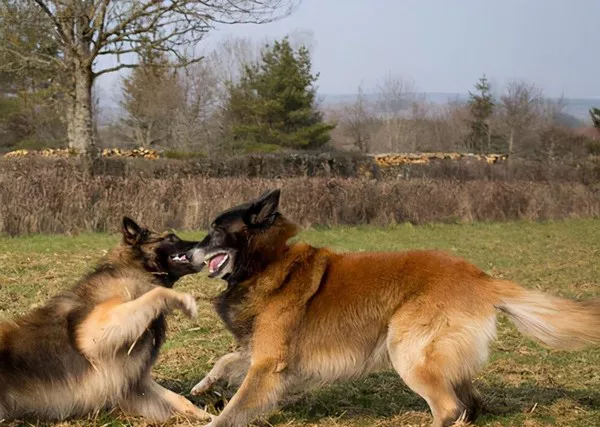The Alaskan Klee Kai, often described as a miniature version of the Siberian Husky, has gained popularity in recent years as a companion animal. With its wolf-like appearance, striking blue eyes, and agile build, this breed is a favorite for people who want the charm of a Husky but with a more manageable size. But beyond their looks, a question that frequently arises is: are Alaskan Klee Kai intelligent? In this article, we will delve into the intelligence of Alaskan Klee Kai dogs, exploring their cognitive abilities, trainability, and overall behavior to give you a clearer understanding of what to expect when bringing one into your home.
What Is Intelligence in Dogs?
Before addressing whether Alaskan Klee Kai dogs are intelligent, it’s important to define what we mean by “intelligence” in the context of dogs. Dog intelligence generally refers to their ability to:
Learn commands and tricks: How easily a dog can understand and respond to new cues.
Problem-solve: The ability of a dog to figure out solutions to challenges or puzzles without much guidance.
Social intelligence: How well a dog interacts with other animals and humans, interpreting body language and social signals effectively.
Instinctual intelligence: The natural behaviors a dog exhibits, which are often tied to their original purpose or breed characteristics.
Since each breed has different genetic traits and ancestral roles, intelligence can manifest in various ways. Some breeds are better at tasks that require problem-solving or task execution, while others are more instinct-driven.
Alaskan Klee Kai Overview
The Alaskan Klee Kai was developed in the 1970s by Linda Spurlin in Alaska, with the aim of creating a smaller version of the Siberian Husky. The breed was initially meant to be a companion dog, but due to its agility, speed, and keen instincts, it can also excel in activities like agility and obedience training.
Alaskan Klee Kais are classified into three size categories: toy, miniature, and standard. Despite their compact size, they still carry the energy and endurance of the Husky, making them highly active and requiring plenty of exercise.
The breed’s characteristics include:
Appearance: Alaskan Klee Kai dogs are known for their wolf-like appearance, complete with a thick double coat, erect triangular ears, and striking facial markings.
Temperament: They are known to be alert, energetic, and loyal, with a tendency to bond closely with their families. While they can be independent, they are also affectionate and enjoy companionship.
Exercise Needs: These dogs require regular physical activity, including walks, runs, and mental stimulation, as they are energetic and intelligent dogs.
Understanding these traits is important because they influence how the breed behaves and learns.
Cognitive Abilities of the Alaskan Klee Kai
In terms of cognitive abilities, the Alaskan Klee Kai is often described as highly intelligent, though their level of intelligence can vary from one dog to another. When assessing a breed’s intelligence, it’s common to look at how they perform in training, their problem-solving skills, and how they interact with their environment.
Trainability
One of the most noticeable signs of intelligence in dogs is their trainability. The Alaskan Klee Kai generally exhibits a high level of intelligence in this area. These dogs can learn new commands fairly quickly, but they also have an independent streak that can make training challenging at times. While they are eager to please their owners, they are also known for being stubborn or selective in how they approach tasks.
Training an Alaskan Klee Kai requires consistency, patience, and positive reinforcement. Unlike some other breeds that are extremely eager to please and may follow commands immediately, the Klee Kai might take a little more time to warm up to new tasks. Their intelligence means they can understand commands, but their independent nature means they might not always be motivated to follow them right away.
Additionally, these dogs may show a preference for training methods that involve mental stimulation and challenges, rather than just simple repetition of tasks. This is an indicator of their ability to think critically and solve problems, which is a hallmark of intelligent dogs.
Problem-Solving Skills
Alaskan Klee Kai dogs exhibit strong problem-solving skills, particularly when it comes to tasks that require them to think independently. For example, if they encounter an obstacle in their environment, they might figure out how to work around it. This trait makes them suitable for activities like agility training and puzzle games, which are popular among dog owners who want to engage their dog’s mind.
Their natural curiosity also plays a role in their problem-solving abilities. Klee Kais are inquisitive and may investigate new situations, objects, or people with a high degree of interest. This can be beneficial for training purposes, as they tend to want to explore and learn more about their surroundings. However, their problem-solving capabilities can sometimes get them into mischief, as they may figure out how to open doors or cabinets if not properly trained.
Social Intelligence
Social intelligence is another important aspect of a dog’s overall cognitive abilities. This involves understanding and responding appropriately to social cues from humans and other animals. In general, Alaskan Klee Kai dogs have a strong sense of social intelligence, as they are highly attuned to the emotions and behaviors of those around them.
These dogs tend to form strong bonds with their families, and they are often described as affectionate and loyal. However, they can also be reserved or aloof with strangers, especially if they haven’t been properly socialized from a young age. While they might not always be as overtly friendly as some other breeds, they can form close, trusting relationships with those they know well.
Social intelligence also manifests in their interactions with other animals. While they may get along well with other dogs, their independent nature can sometimes lead to issues, especially if they are not adequately socialized early on. This is something to keep in mind when introducing a new dog into a household with an Alaskan Klee Kai, as they may initially show signs of territorial behavior or assertiveness.
Instinctual Intelligence
Instinctual intelligence refers to a dog’s innate abilities that are shaped by their genetic background and the role they were originally bred for. The Alaskan Klee Kai is no exception in this regard. Though they are primarily companion dogs today, their ancestry as working sled dogs influences their instincts.
As a breed, they have a strong prey drive, which is linked to their original role as sled dogs and hunters. This instinct makes them highly alert and quick to react to movement in their environment. While this can make them excellent watchdogs, it also means that they may be prone to chasing small animals, including squirrels, rabbits, or even small household pets like cats.
Their instinctual intelligence also includes a high level of endurance and a desire for physical activity. Alaskan Klee Kais are bred to be fast and agile, so they need both mental and physical exercise to keep them happy. Without proper outlets for their energy, they can become bored or destructive.
Challenges with Training an Alaskan Klee Kai
Although the Alaskan Klee Kai is an intelligent breed, training them can sometimes be challenging. Their independent nature, combined with their high energy levels, means they might not always be the easiest dogs to train. However, with the right approach, they can excel in learning.
Some common challenges include:
Stubbornness: Alaskan Klee Kais have a strong-willed personality, and they may not always follow commands right away. This is particularly true if they do not see the benefit of performing the task or if they’re not motivated enough.
Short Attention Span: Their curious nature means they might get distracted easily, making it harder to keep them focused during training sessions.
Prey Drive: Because of their high prey drive, they may become fixated on smaller animals or moving objects, which can interfere with training sessions if they are not properly redirected.
To address these challenges, it’s important to use positive reinforcement techniques, such as treats, praise, and toys, to keep the dog motivated. Short training sessions that focus on variety and mental stimulation are often more effective than long, repetitive sessions.
How to Stimulate the Alaskan Klee Kai’s Mind
Since Alaskan Klee Kai dogs are intelligent and energetic, mental stimulation is just as important as physical exercise. Here are a few ways to keep them mentally engaged:
Interactive toys and puzzles: These toys challenge dogs to think critically and problem-solve, which keeps their minds active.
Agility training: The Alaskan Klee Kai excels in agility courses, which provide both physical exercise and mental stimulation.
Training sessions with varied commands: Teaching them new tricks or skills not only helps with obedience but also engages their intellect.
Socialization: Regular interactions with other dogs and people help them build their social intelligence.
Conclusion
In conclusion, Alaskan Klee Kai dogs are highly intelligent animals with a unique blend of independence, curiosity, and problem-solving ability. Their intelligence is evident in their ability to learn commands, solve problems, and interact with their environment. However, their independent nature can sometimes make them more challenging to train than other breeds.
While they are highly trainable, they require owners who are patient, consistent, and willing to engage their minds with challenging activities. With proper training, mental stimulation, and socialization, the Alaskan Klee Kai can be an incredibly rewarding companion, showcasing both its intelligence and its loyalty.
Related Topics:




















